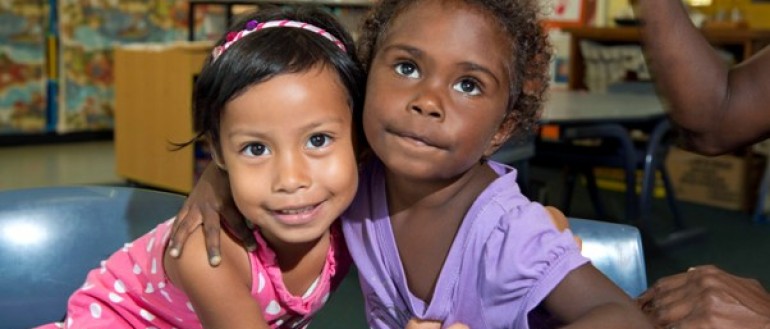Aims:
- To test 200 hospitalised Indigenous children with bronchiolitis to deterimine if oral Azithromycin, compared to placebo 30 mg/kg per dose, or oral placebo, improves clinical outcomes. This will be measured via the length of stay in hospital and the duration of oxygen supplementation
- To evaluate other important questions related to acute lower respiratory tract infections in Indigenous children, including potential adverse outcomes from widespread use of macrolides in Indigenous communities.
Objectives:
Primary:
- To compare oral Azithromycin to oral placebo given in three doses, seven days apart, to determine which improves the clinical outcomes of length of stay in hospital and duration of oxygen supplementation.
Secondary:
- To determine the effect of treatment on re-admissions into hospital within six months
- To examine whether macrolide-resistant respiratory pathogens present in nasopharyngeal swabs (NPS) influence clinical severity.
- To assess the short-term impact of Azithromycin on macrolide resistance patterns of respiratory pathogens in the nasopharynx.
- To describe the point prevalence and diversity of respiratory viruses, Mycoplasma pneumoniae and Chlamydia species (C. pneumoniae, C. trachomatis, Simkania negevensis) using sensitive molecular diagnostic techniques.
Summary:
Bronchiolitis remains the most common acute lower respiratory tract infection (ALRTI) in infants. It causes inflammation of the small airways, increased mucous production and necrosis of epithelial tissue.
In paediatrics, bronchiolitis is a clinical diagnosis characterised by tachypnoea, wheeze and/or crepitations in infants following a preceding upper respiratory illness. Most cases can be treated at home; however in some cases hospitalisation may be required for supportive therapy.
In the Northern Territory (NT), Indigenous infants present to hospital more often and with more severe bronchiolitis than non Indigenous infants. They are at greater risk of developing longer term respiratory problems including chronic suppurative lung disease or bronchiectasis.
A class of antibiotics called macrolides (i.e. Azithromycin) have been widely used in the NT for bronchiectasis. Azithromycin has anti inflammatory and bacterial properties. It has a longer half life and better tissue penetration than other macrolides, thus requiring a much shorter treatment regime. Once weekly dosing has shown to be sufficient for tissue effects lasting over a week.
Any intervention that is efficacious in reducing the severity of bronchiolitis and or re-admission for bronchiolitis in particular for Indigenous children would be beneficial in the short and long term.
Three sites are involved in this clinical trial – Royal Darwin Hospital, The Townsville Hospital and Starship Children’s Hospital.
Our research has found:
Despite reducing nasopharyngeal bacterial carriage, three large once-weekly doses of azithromycin did not confer any benefit over placebo during the bronchiolitis illness or 6 months post hospitalization. Azithromycin should not be used routinely to treat infants hospitalized with bronchiolitis.
Chief investigator:
Project manager:
Contact information:
Project dates:
Completed
Funders:
- National Health and Medical Research Council (NHMRC).
Collaborators:
- Professor Anne Chang, Menzies School of Health Research
- Professor Peter Morris, Menzies School of Health Research
- Keith Grimwood, Queensland Children’s Medical Research Institute
- Theo Sloots, Queensland Paediatric Infectious Diseases Lab
- Andrew White, James Cook University
-
Carolyn McClennan, Royal Darwin Hospital.
- McCallum G.B., Morris P.S., Grimwood K., Maclennan C., White A.V., Chatfield M.D., et al. (2015). Three-weekly doses of azithromycin for Indigenous infants hospitalised with bronchiolitis: A multicentre, randomised, placebo-controlled trial. Frontiers in Pediatrics, 3, 32.
- McCallum, G.B., Morris, P.S., Wilson, C.C., Versteegh, L.A., Ward, L.M., Chatfield, M.D., & Chang, A.B. (2012). Severity scoring systems: Are they internally valid, reliable and predictive of oxygen use in children with acute bronchiolitis? Pediatric Pulmonology, 48(8), 797-803.

